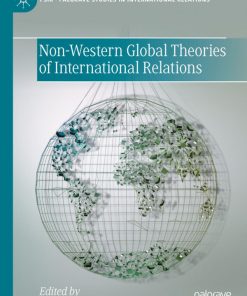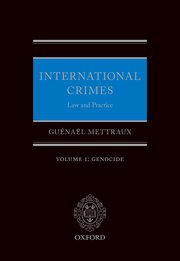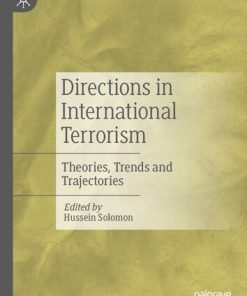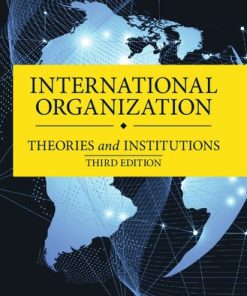Perpetrators of International Crimes Theories Methods and Evidence 1st edition by Alette Smeulers, Maartje Weerdesteijn, Barbora Hola 0192565501 9780192565501
$50.00 Original price was: $50.00.$25.00Current price is: $25.00.
Perpetrators of International Crimes: Theories, Methods, and Evidence 1st edition by Alette Smeulers, Maartje Weerdesteijn, Barbora Hola – Ebook PDF Instant Download/DeliveryISBN: 0192565501, 9780192565501
Full download Perpetrators of International Crimes: Theories, Methods, and Evidence 1st edition after payment.
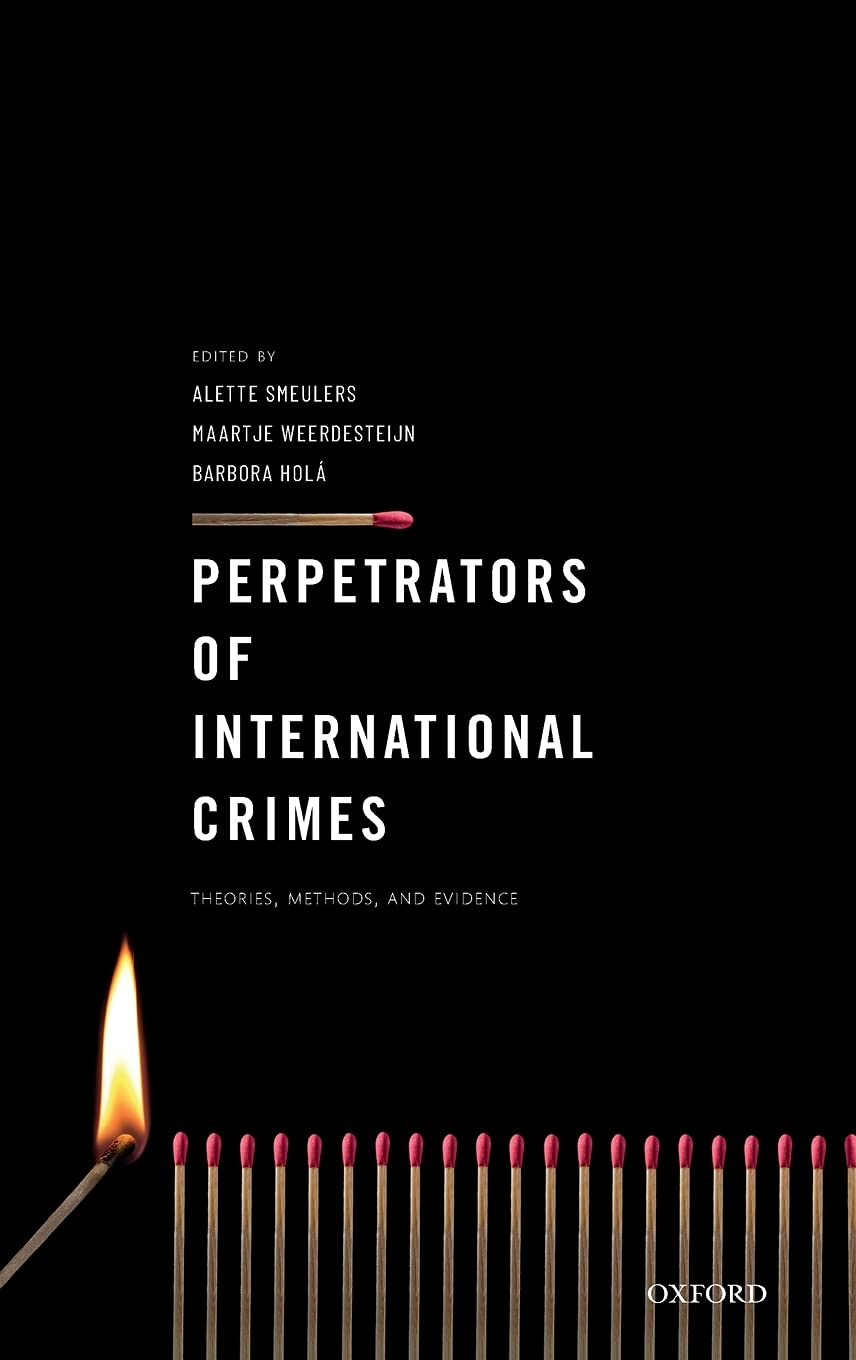
Product details:
ISBN-10 : 0192565501
ISBN-13 : 9780192565501
Author: Alette Smeulers, Maartje Weerdesteijn, Barbora Hola
Why would anyone commit a mass atrocity such as genocide, crimes against humanity, war crimes, or terrorism? This question is at the core of the multi- and interdisciplinary field of perpetrator studies, a developing field which this book assesses in its full breadth for the first time. Perpetrators of International Crimes analyses the most prominent theories, methods, and evidence to determine what we know, what we think we know, as well as the ethical implications of gathering this knowledge. It traces the development of perpetrator studies whilst pushing the boundaries of this emerging field. The book includes contributions from experts from a wide array of disciplines, including criminology, history, law, sociology, psychology, political science, religious studies, and anthropology. They cover numerous case studies, including prominent ones such as Nazi Germany, Rwanda, and the former Yugoslavia, but also those that are relatively under researched and more recent, such as Sri Lanka and the Islamic State. These have been investigated through various research methods, including but not limited to, trial observations and interviews.
Perpetrators of International Crimes: Theories, Methods, and Evidence 1st edition Table of contents:
1. The Field: Perpetrator Studies
2. The Topic: Perpetrators of International Crimes
3. The Book: Theories, Methods, and Evidence
I. Perpetrator Studies
1. Historical Overview of Perpetrator Studies
1. Introduction
2. Nuremberg and the Face of Evil: Mentally Disturbed Criminals or Ordinary Men?
3. The Autobiography of Hoess and the World through the Eyes of the Perpetrators
4. The Trial of Adolf Eichmann and Hannah Arendt’s Banality of Evil Thesis
5. Psychological Experiments and the Social-Psychological Approach
6. The Browning-Goldhagen Debate: Situational or Dispositional
7. Biographies and Case Studies
8. Towards a Broader Perspective
8.1 Case studies
8.2 New disciplinary and methodological approaches
8.3 Terrorism research
9. Conclusion
2. Theories, Methods, and Evidence
1. Introduction
2. Theories and Evidence: What Do We Assume and What Do We Know?
2.1 Individual level: perpetrator’s personality, character traits, and disorders
2.2 Situational level: perpetrator in his immediate surroundings
2.3 Societal level: broader political, ideological, societal, and cultural context
2.4 Processes of violence: from radicalization to violence
3. Methods: How Do We Know What We Know?
3.1 Qualitative studies
3.2 Quantitative and mixed-method studies
3.3 Experiments
4. Reflecting on the Theories, Methods, and Evidence: How Much Do We Know?
II. Reflecting on Methods and Sources
3. Perpetrators, Fieldwork, and Ethical Concerns
1. Introduction
2. Field Research and Methodology
3. Field Research and Alleged or Potential Perpetrators
3.1 El Salvador 1997–1998
3.2 Sri Lanka 1999–2005/2006
3.3 Colombia 2005–2006
3.4 Sudan 2005–2006
3.5 Sierra Leone 2004–2014
4. Why Should We Worry?
5. Deficits for the Defence/Inequality of Arms
5.1 What happens to the acquitted?
5.2 ‘Double prosecutor’ effect of having victim participation/common legal representatives
5.3 Concerns about evidence, witnesses, and intermediaries: from Lubanga to Kenya
6. Fieldwork and Power-Relations
7. Manipulation or Narrative Promotion?
8. Concluding Thoughts
4. Interviewing Perpetrators against the Backdrop of Ethical Concerns and Reflexivity
1. Introduction
2. Researching Presumed Perpetrators: The Significance of Ethics and Reflexivity
2.1 The significance of ethics and reflexivity in relation to identity management and power concerns
2.2 The research project
3. The Age of Accountability and the Social Construction of the Figure of the Perpetrator
4. Reflexivity and Ethical Concerns throughout the Research Process
4.1 The preparation stage
4.2 The interview process
4.3 Interview outcomes and outputs: analysis, interpretation, and dissemination
5. Conclusions
5. Studying ‘Perpetrators’ through the Lens of the Criminal Trial
1. Introduction
2. Knowing the Unknowable
3. Observing the Invisible
4. Comparing the Incomparable
5. Ordinary Eichmanns?
5.1 Kaing Guek Eav (Duch)
5.2 Charles Taylor
5.3 Laurent Gbagbo
5.4 Studying perpetrators on trial
6. Conclusion
III. Studying Perpetration
6. Perpetration as a Process: A Historical-Sociological Model
1. Introduction: Building a Dynamic Model
2. The Macro Context: Orchestrating
3. The Meso Context: Organizing
4. The Micro Context: Killing
5. Discussion
7. The Margins of Perpetration: Role-Shifting in Genocide
1. Introduction: Individual Roles in Genocide
2. Roles in Genocide
2.1 Hilberg’s atrocity triangle
2.2 Beyond Hilberg: accounting for the complexity of perpetration
3. Perpetration and Victimization
3.1 Perpetration-victimization
3.2 Victimization-perpetration
4. Bystanding and Perpetration
4.1 Perpetration-bystanding
4.2 Bystanding-perpetration
5. Perpetration and Rescuing
5.1 Perpetration-rescuing
5.2 Rescuing-perpetration
6. Navigating Genocide
6.1 Constrained agency: the social role and immediate margin of discretion
6.2 Genocidal serendipity
6.3 The dynamics of role shifting
7. Roles and Identity After Genocide
8. Conclusion: Do Categories Matter?
8. Beyond Perpetrators: Complex Political Actors Surrounding the 1994 Genocide in Rwanda
1. Introduction
2. The Official History of ‘the 1994 Genocide against the Tutsi’
3. Approaching Rwanda’s Génocidaires
4. The Politics of Perpetration in Rwanda’s Post-Genocide Period: Three Case Studies
4.1 A typical génocidaire? Michel
4.2 A ‘true monster’: Devota
4.3 A Tutsi génocidaire? Elliot’s story
5. From Génocidaires to Complex Political Actors
6. Conclusion
IV. Studying Perpetrators: Case Studies
9. Studying Perpetrator Ideologies in Atrocity Crimes
1. Introduction
2. Moving Beyond Existing Perspectives
3. A Neo-Ideological Approach
4. Illustration: Stalin’s Great Terror
5. Conclusion
10. Religion and International Crimes: The Case of the Islamic State
1. Introduction
2. Religion and Violence
3. ‘A Religious War’
4. Enslaving Yazidis: A Case of ‘Religious Genocide’?
5. Attacking the West: A Case of ‘Religious Terrorism’?
6. Conclusion
11. The Female Tigers of Sri Lanka: The Legitimation of Recruitment and Fight
1. Introduction
2. The Role of Women in War: Women as Fighters
3. The Sri Lankan Conflict
4. The Rise of Tamil Militancy and the LTTE
5. Female LTTE Fighters
5.1 Reasons to join the LTTE
5.2 Fighting with ‘the boys’
5.3 Heroism and martyrdom
5.4 Victim versus agent? Feminist empowerment or nationalist subjugation?
6. Conclusion
12. The Rationality and Reign of Paul Kagame
1. Introduction
2. Rwanda under Kagame’s Rule
3. Dictatorial Rule and the Role of Rationality
4. The Life and Reign of Paul Kagame: A More Nuanced Perspective on Rationality
4.1 Early life
4.2 Fighting with the RPF
4.3 Ruling Rwanda
5. The Rationality and Reign of Paul Kagame
6. Conclusion
V. Studying Perpetrators on Trial: Case Studies
13. Nothing Must Remain: The (In)visibility of Atrocity Crimes and the Perpetrators’ Strategies using the Corpses of their Victims
1. Introduction
2. Displaying Cadavers, Instilling Fear, and Affirming Power over Life and Death: Perpetrators’ Perverse Game of (In)visibility of Violence
3. Hiding Cadavers to Conceal the Crimes: An Attempt at Evading Justice by Hampering Investigations and Evidence-Gathering?
4. Disposing of Cadavers to Disguise the Crimes: An Attempt at Re-Writing History
5. The Treatment of Cadavers and Genocidal Intent: Annihilating Identities to Destroy the Group
5.1 Mutilating cadavers and robbing their graves to destroy the group
5.2 Destroying corpses to kill the dead
6. Conclusion
14. Plausible Deniability: The Challenges in Prosecuting Paramilitary Violence in the Former Yugoslavia
1. Introduction
2. Paramilitaries and Plausible Deniability
3. Nature and Characteristics of Paramilitaries in the Former Yugoslavia
3.1 Ambiguity and control
3.2 Importance of borders for plausible deniability
3.3 Loyalty and autonomy
4. Criminal Prosecutions for Paramilitary Violence
5. Some Challenges to Prosecution of Paramilitary Violence
5.1 Types of evidence in prosecuting paramilitary violence
6. Conclusion
15. Perpetrators on Trial: Characteristics of War Crimes Perpetrators Tried by Courts in Bosnia and Herzegovina and ICTY
1. Introduction
2. Conflict in Bosnia and Herzegovina, Perpetrators of International Crimes, and Criminal Justice
2.1 Criminal justice response after the conflict in Bosnia and Herzegovina
3. Methodology
4. Results
4.1 Socio-demographic characteristics
4.2 Crime-related characteristics
5. Conclusion
16. ‘Like Mirrors of Morality’: Social Support for Nazi War Criminals in Post-War Germany
1. Introduction: Support for Prisoners in Contemporary Criminal Justice
2. Framing Solidarity and Social Support for Perpetrators of Mass Atrocities
2.1 Conceptualizing solidarity and support
2.2 Contextualizing social support for perpetrators in transitional and post-conflict societies
3. Supporting Nazi War Criminals in Post-War Germany
3.1 Setting the scene
3.2 Networks of support
3.3 Organizing support: associations, charities, and the churches
4. Celebrity, Lifelines, Organizations: Case Studies of Support
4.1 A fund for Albert Speer
4.2 Lifelines and lies: evading justice
4.3 Association for Mutual Aid (HIAG): strategizing for comrades in arms
5. Conclusion: From the Past to the Present
People also search for Perpetrators of International Crimes: Theories, Methods, and Evidence 1st edition:
perpetrators of ipv
international crime of aggression
victims of international crimes an interdisciplinary discourse
who prosecutes international crimes
definition of international crimes
Tags: Perpetrators, International Crimes, Theories, Methods, Evidence, Alette Smeulers, Maartje Weerdesteijn, Barbora Hola
You may also like…
Romance - Young Adult Romance
Politics & Philosophy - International Relations
Introduction To International Relations: Theories And Approaches 8th Edition
Politics & Philosophy - International Relations
Politics & Philosophy - International Relations
Non-Western Global Theories of International Relations 1st Edition
Jurisprudence & Law - Criminal Law & Procedure
International Crimes Law and Practice Volume I: Genocide Guenael Mettraux
Uncategorized
Erotica - Fiction
Uncategorized
(eBook PDF) Archaeology Essentials: Theories, Methods, and Practice 4th Edition by Colin Renfrew







